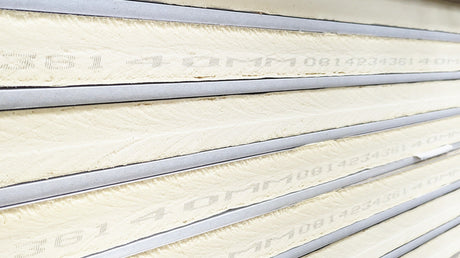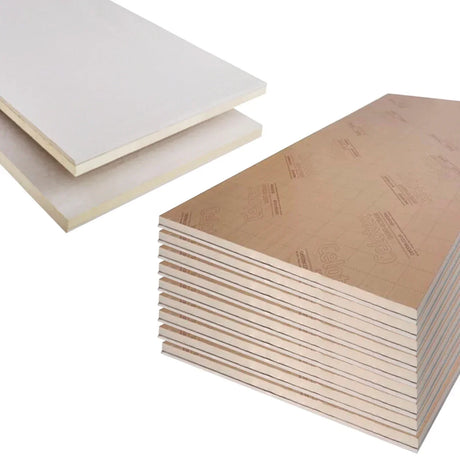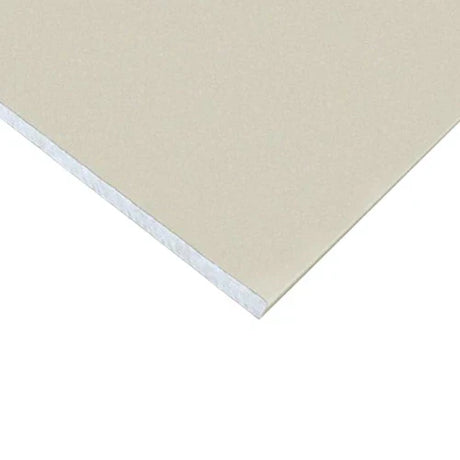When I first started exploring home improvement projects, I'll admit I was completely overwhelmed by the sheer number of components involved in even the simplest roofing tasks. Guttering accessories seemed like an afterthought, and roof insulation felt like something best left to the professionals. However, after working with countless DIY enthusiasts and trade professionals across the UK, I've learned that understanding these essential elements can make the difference between a job that lasts decades and one that requires constant maintenance.
Understanding the Fundamentals of Guttering Systems
Before diving into the specific accessories that make guttering systems work effectively, it's worth understanding what we're actually trying to achieve. Your guttering system serves as your property's first line of defence against water damage, channelling rainwater away from walls, foundations, and structural elements. In the UK's notoriously wet climate, this isn't just important—it's absolutely essential.
A complete guttering system comprises several key components working together seamlessly. You'll need the guttering channels themselves, downpipes to carry water to ground level, and crucially, the various guttering accessories that connect, seal, and support the entire system. Quality brands like Marley and FloPlast have become household names in British construction for good reason—they've spent decades perfecting these systems for our specific climate challenges.
The Essential Guttering Accessories You Actually Need
When I first began specifying materials for roofing projects, I made the mistake of focusing solely on the guttering itself. I quickly learned that guttering accessories aren't optional extras—they're fundamental components that determine system performance and longevity.
Brackets and Clips: The Unsung Heroes
Supporting your guttering properly starts with selecting appropriate brackets and fascia clips. The British Standard BS EN 607 requires brackets to be positioned at maximum 800mm intervals for plastic guttering systems, though in exposed locations, you'll want to reduce this spacing to 600mm or less. Modern bracket designs from manufacturers like Marley incorporate innovative features such as adjustable angles and quick-release mechanisms, making installation significantly more straightforward than traditional fixed designs.
The material choice for brackets matters more than you might initially think. Cast aluminium brackets offer exceptional strength-to-weight ratios and excellent corrosion resistance, making them ideal for coastal properties where salt spray presents unique challenges. Galvanised steel alternatives provide robust performance at economical price points, whilst maintaining compatibility with both plastic and metal guttering systems.
Unions and Joiners: Creating Seamless Systems
The joints between guttering sections represent potential weak points in any system, which is why proper union pieces and joiners rank among the most critical guttering accessories you'll specify. Modern union designs incorporate sophisticated sealing technologies, typically featuring EPDM rubber gaskets that maintain their elasticity across temperature ranges from -40°C to +120°C—well beyond what UK weather conditions demand, providing reassurance for long-term performance.
When selecting union pieces, consider the thermal expansion characteristics of your guttering material. PVC guttering can expand by approximately 3mm per metre when temperature increases by 20°C. Quality union designs accommodate this movement whilst maintaining weather-tight seals, preventing the leaks that plague poorly designed systems.
Stop Ends and Outlets: Managing Water Flow
Every guttering run requires properly specified stop ends to contain water flow and outlets to direct it into downpipes. These seemingly simple components actually perform complex functions, managing water flow rates during heavy rainfall whilst preventing overflow and splash-back. Modern outlet designs incorporate debris guards and leaf catchers, reducing maintenance requirements whilst ensuring consistent performance.
The positioning of outlets deserves careful consideration. British Standard recommendations suggest maximum runs of 12 metres between outlets for 112mm half-round guttering, though local rainfall intensity and roof area should inform your specific decisions. In areas experiencing particularly heavy rainfall, reducing this distance to 8-10 metres provides additional capacity and peace of mind.
Connecting Your Guttering to Effective Roof Insulation
Whilst guttering accessories manage external water, proper roof insulation addresses another critical aspect of building performance—thermal efficiency and internal moisture management. The connection between these systems might not be immediately obvious, but they work in concert to protect your property.
Modern building regulations, specifically Approved Document L, mandate increasingly stringent thermal performance standards. For pitched roofs, achieving U-values of 0.16 W/m²K or better requires carefully selected insulation materials and appropriate installation techniques. Leading UK manufacturers like Celotex, Knauf, and Isover have developed sophisticated solutions specifically for British construction methods and climate conditions.
Insulation Materials: Making Informed Choices
The British insulation market offers several material types, each with distinct performance characteristics and application suitability. Understanding these differences helps ensure optimal outcomes for your specific project requirements.
Rigid PIR Insulation: Modern Efficiency
Polyisocyanurate (PIR) insulation boards, such as those manufactured by Celotex and Kingspan, represent the current gold standard for roof insulation in UK construction. These boards achieve impressive thermal conductivity values around 0.022 W/mK, allowing relatively thin installations to meet stringent regulatory requirements. A typical 100mm thickness of quality PIR insulation achieves U-values approaching 0.18 W/m²K, comfortably exceeding current building regulation minimums.
The rigid board format simplifies installation, particularly in renovation projects where maintaining internal ceiling heights presents challenges. The boards' dimensional stability and compression resistance make them suitable for both between-rafter and over-rafter installation approaches, providing versatility across different project types.
Mineral Wool Solutions: Traditional Performance
Glass and rock wool insulation from manufacturers like Knauf and Isover continue to serve important roles in British construction, particularly where fire performance requirements are stringent. These materials achieve non-combustible classification to BS EN 13501-1, making them particularly suitable for buildings with multiple occupancies or specific fire safety requirements.
The flexibility of mineral wool products provides advantages in certain applications, particularly when insulating between rafters in older properties where timber dimensions vary. Modern products incorporate water-repellent treatments and improved binder technologies, enhancing durability whilst maintaining the excellent thermal and acoustic performance characteristics that have made mineral wool a construction staple for generations.
Ventilation: The Critical Link Between Guttering and Insulation
Understanding the relationship between external drainage and internal moisture management reveals why both systems require equal attention. Your guttering accessories manage rainfall, but roof ventilation systems handle moisture vapour generated within the property—and getting this wrong causes serious problems.
British Standard BS 5250 provides comprehensive guidance on condensation risk management, emphasising the importance of balanced ventilation strategies. Cold roof constructions, where insulation sits at ceiling level, require continuous ventilation at eaves (minimum 25,000mm² per metre run) combined with ridge ventilation (minimum 5,000mm² per metre). Modern ventilation products integrate seamlessly with standard guttering accessories, ensuring water management doesn't compromise essential air movement.
Practical Installation Considerations
Successfully implementing both guttering and insulation systems requires attention to numerous practical details. Temperature conditions during installation affect both systems significantly—plastic guttering accessories should be installed at temperatures between 5°C and 20°C to ensure proper expansion joint function, whilst insulation board cutting and fitting proceeds most efficiently in similar conditions.
The sequence of installation work matters considerably. Establishing proper guttering support brackets before installing fascia boards ensures correct falls and alignment, whilst completing roof insulation before internal finishing allows for proper inspection and any necessary adjustments. Quality manufacturers provide comprehensive technical literature and installation guidance—resources we strongly recommend consulting before commencing work.
Maintenance: Ensuring Long-Term Performance
Both guttering systems and roof insulation require periodic inspection and maintenance to ensure continued performance. We recommend biannual guttering checks, ideally in autumn after leaf fall and spring before the growing season begins. During these inspections, examine all guttering accessories for security, check seals for deterioration, and clear any debris accumulation.
Roof insulation, whilst requiring less frequent intervention, benefits from occasional inspection, particularly in properties experiencing condensation issues. Check for compression damage, moisture penetration, and ensure ventilation paths remain unobstructed. Early identification of issues allows straightforward remediation before significant problems develop.
Conclusion: Bringing It All Together
Understanding guttering accessories and roof insulation might initially seem overwhelming, but breaking these systems into component parts reveals they're entirely manageable with appropriate guidance and quality materials. We've built DIY Building Supplies on the principle that everyone deserves access to premium materials combined with expert technical support.
Whether you're tackling a complete re-roofing project or simply upgrading failing guttering components, having trusted suppliers who understand both products and applications makes all the difference. Our team brings decades of combined experience helping DIY enthusiasts and trade professionals across the UK achieve outstanding results.
For guidance on selecting appropriate guttering accessories for your specific project, or to discuss roof insulation specifications that meet your performance and budgetary requirements, our technical team stands ready to help. We're not just about shifting materials—we're about ensuring your project succeeds through proper specification, quality products from manufacturers like Marley, Celotex, and Knauf, and the kind of practical advice that only comes from genuine experience.
Visit us at DIY Building Supplies, where expertise meets approachability, and every project receives the attention it deserves.









